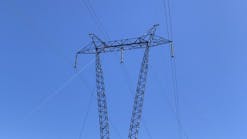Solar generation in ERCOT, the independent system operator that serves about 90% of electricity demand in Texas, jumped 46% in January, rising to 2.2 million megawatt-hours (MWh) from 1.5 million MWh in 2023.
The sharp increase was highlighted by three solar records during the month. The first occurred Jan. 16 at the height of a strong winter cold snap. Output climbed to 14,837 megawatts (MW), accounting for 23% of total system demand. The second two records were set on Jan. 28, when solar hit new highs both for generation at 15,222 MW and for market share at 36.1%.
Those records were short-lived, as solar generation smashed through 16,000 MW on Feb. 13, topping 16,500 MW for an hour in the morning. At that point, and for some 7.5 hours during the day, solar provided more than 30% of the system’s power needs. More records will be forthcoming, as massive amounts of new PV capacity are expected online in ERCOT over the next two years. As of January, 22,258 MW of PV capacity were operational in ERCOT; by the end of 2024, the figure could climb to more than 30,000 MW, according to the system operator’s latest data.
This new capacity sets the stage for a momentous shift at ERCOT this year, when solar generation is likely to top coal-fired generation. In its latest short-term energy outlook released Feb. 6, the Energy Information Administration (EIA) projected that solar generation in ERCOT will increase by 24 million MWh in 2024, while coal’s output will drop by 14 million MWh. Combining those forecasts with ERCOT’s year-end totals for 2023 puts solar generation at 56 million MWh by year’s end and coal-fired generation at a projected 48 million MWh.
ERCOT data shows that an additional 13,153 MW of solar capacity could be operational in 2025, so the gap between the two resources will only continue to widen. The totals also are conservative, reflecting only the capacity most likely to be built—projects that have both signed transmission interconnection agreements and posted the financial security needed to complete the tie-ins.
An equally important transition could occur in 2025. In its February forecast, EIA projects that wind and solar generation in ERCOT will climb to 189 million MWh, topping natural gas (at 177 million MWh) as the system’s single largest generation resource. Adding nuclear’s projected output of 42 million MWh would push ERCOT’s carbon-free generation above 50% for the first time, a stunning shift from 2015, when solar data was not even independently released by the system operator, wind was 11.7% and nuclear 11.3%—totaling just 23% of the system’s total generation.
The rapid construction of battery storage projects in the past two years is another sign of the shift under way in ERCOT. In its review of the system’s performance during the mid-January winter storm, which resulted in five new all-time winter demand records, ERCOT noted that battery storage facilities provided an average of 1.5% of total energy needs during the three highest peak periods. The percentage is certain to climb. Currently, ERCOT has 5,242 MW of operational battery storage capacity; by the end of the year, the figure is expected to more than double to 10,923 MW (again, this represents only those projects with signed interconnection agreements and posted financial security). And more storage is on the way in 2025, with ERCOT data showing another 6,210 MW in the advanced development stage.
Data the Institute for Energy Economics and Financial Analysis collected in 2023 showed that solar supplied roughly 62% of its installed capacity (10,898 MW of the 17,631 MW total) to the grid during the peak hour of the state’s record-setting summer between June 15 and Sept. 15, 2023. This amounted to a little less than 14% of demand on average for the 93-day period. Given the significant increase in installed capacity projected by June 2024 (ERCOT estimates 24,000 MW could be online), solar could be pumping almost 15,000 MW into the ERCOT grid during the peak hour this summer, which would have been 19% of demand last summer. Couple that with the fast-rising amount of battery storage and you have a one-two punch that can keep the grid running reliably.


